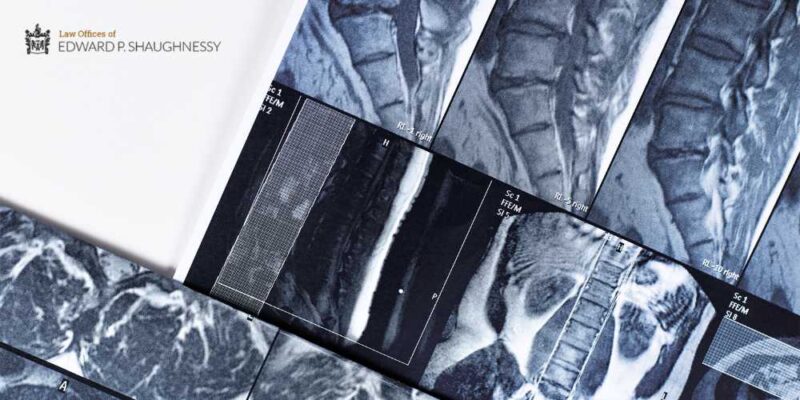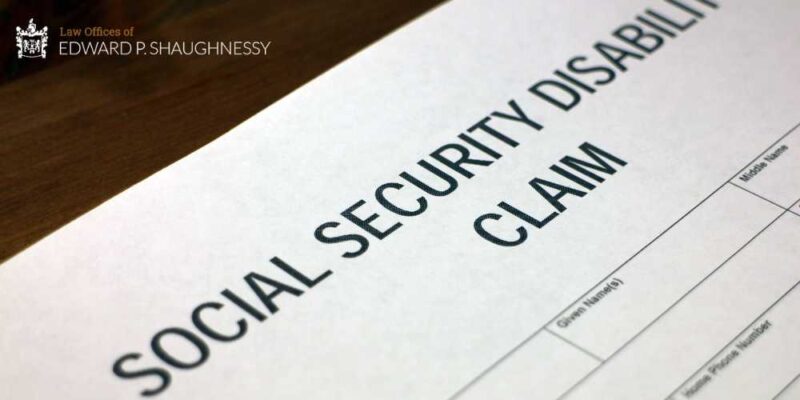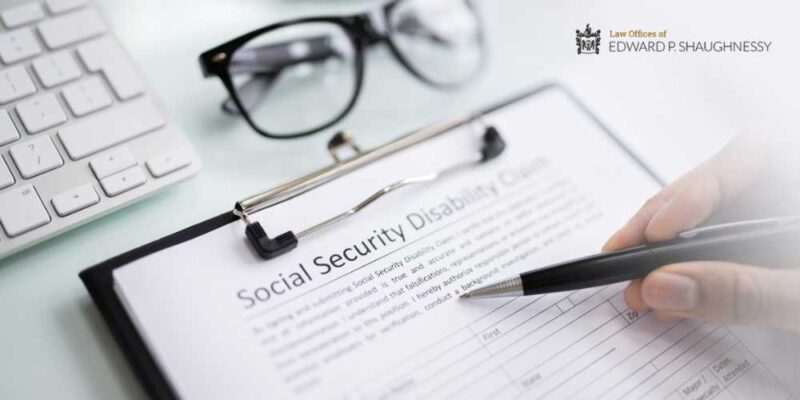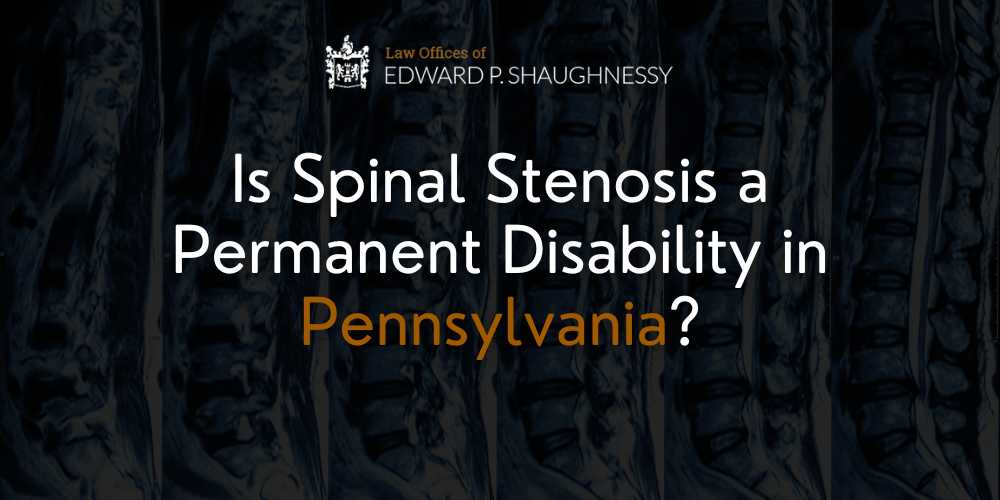For many individuals living with spinal stenosis, they may wonder, “Is spinal stenosis a permanent disability in Pennsylvania?” The answer to this question is critical in determining eligibility for long-term disability benefits and social security disability benefits.
Spinal stenosis occurs when the spinal canal narrows, compressing the spinal cord or nerve roots. This can impact various regions. Lumbar spinal stenosis affects the lower extremities. Cervical spinal stenosis affects the neck, and thoracic spinal stenosis affects the mid-back.
The effects of severe stenosis can make everyday tasks nearly impossible, sometimes leading individuals to wonder if they qualify for disability for spinal stenosis.
Our disability lawyers in Easton, PA, explain how to apply for Social Security disability benefits, whether you’re dealing with cervical stenosis, lumbar stenosis, or any spinal injury.
If spinal stenosis prevents you from maintaining gainful employment, contact us to discuss your disability claim and find out how we can help you pursue benefits for spinal stenosis.
To schedule a free consultation with Easton disability lawyer Ed Shaughnessy, call 610-258-9955.
What is Spinal Stenosis?
Spinal stenosis is a documented medical condition that occurs when the spaces within the spine narrow, putting pressure on the spinal nerve roots. Patients can develop spinal stenosis from the natural aging process, bone spurs, herniated discs, and degenerative conditions like arthritis.
Severe stenosis most commonly impacts the lumbar spine and cervical spine, though it may also affect the thoracic spine. Depending on the severity and location, it can cause pain, neurological compromise, and limitations in musculoskeletal functioning that significantly impact daily life.
As the condition progresses, individuals may experience debilitating pain and mobility issues. This leads many victims to seek spinal stenosis disability benefits. It’s essential to understand the symptoms and treatment options that may help, as well as the pathways to social security disability benefits.
Spinal Stenosis Symptoms
Patients can experience chronic pain in the upper or lower extremities, muscle weakness, and sensory changes, such as decreased sensation or numbness in the upper or lower extremities.
Individuals with lumbar spinal stenosis may experience severe pain or discomfort in the lower back, legs, or feet, sometimes leading to issues like decreased deep tendon reflexes, bowel incontinence, or limited range of motion. In cases of cervical stenosis, neck pain and difficulty using the hands or arms may interfere with routine tasks.
The symptoms of spinal stenosis can worsen over time, often requiring documented medical notes to track the progression.
Those experiencing spinal stenosis symptoms may qualify for disability for spinal stenosis through the Social Security Administration (SSA). If you’re experiencing these symptoms, consulting with medical providers early on can help ensure you have a documented medical need.

Accidents our Spinal Stenosis Lawyers in Easton, PA Commonly Handle
While some individuals develop spinal stenosis as a gradual condition, certain traumatic events can trigger or intensify symptoms. These accidents often place sudden strain on the spinal canal and related complications that may require ongoing medical treatment.
Our personal injury lawyers in Easton, PA, support individuals whose spinal injury was caused by unexpected accidents. We also help those who have developed the condition naturally seek long-term disability benefits for spinal stenosis.
Auto Accidents
Auto accidents can lead to or worsen spinal stenosis, as the sudden impact can compress the spinal canal. This narrowing places pressure on the spinal nerve roots and cord. For individuals with pre-existing spinal stenosis, an accident can intensify these issues.
Victims often require extensive medical care, including physical therapy or spinal surgery, to manage pain and improve function. An experienced auto accident lawyer in Easton, PA, can be instrumental in helping accident victims seek compensation.
Slip and Fall Accidents
Slip and fall accidents can cause spine injuries, such as lumbar spinal stenosis or nerve compression. Hazards like wet floors, poor lighting, or uneven surfaces are common contributors to these incidents.
When property owners fail to maintain a safe premises, they can be held liable for the resulting injuries. Easton slip and fall lawyers help victims navigate the legal process to hold negligent property owners accountable.
Workplace Injuries
Workplace injuries are a common cause of spinal issues, especially for individuals in physically demanding jobs. Accidents such as falls, heavy lifting, or repetitive strain can lead to serious conditions like spinal stenosis that impact an individual’s ability to gain employment.
A knowledgeable workers’ compensation lawyer in Easton, PA, can help injured workers file claims, secure benefits for medical expenses and lost wages, and explore additional compensation options when applicable.
Medical Malpractice
Medical malpractice can also cause spinal injuries. Errors in treatment, such as misdiagnosing spinal stenosis, performing incorrect or unnecessary spinal surgery, or failing to monitor symptoms, can lead to worsening health issues or permanent disability.
A skilled medical malpractice lawyer in Easton, PA, can evaluate the case details, help gather essential evidence, and advocate for fair compensation for those harmed by substandard care.

Common Types of Spinal Cord Injuries and Spinal Stenosis Disability Claims Our Lehigh Valley Lawyers Handle
Spine injuries can have lasting effects on an individual’s life and can lead to conditions that qualify for long-term disability benefits. Injuries such as cervical spinal stenosis, lumbar stenosis, and thoracic spinal injuries can cause severe pain, weakened muscles, and sensory changes, creating ongoing challenges in daily life.
For those who cannot work due to spinal stenosis or another spinal disorder, pursuing a disability claim may be essential to maintaining financial stability and accessing necessary medical care.
A social security disability lawyer in Easton, PA, can assist with each step of the application or appeal process, helping individuals provide the necessary evidence to present a documented medical need for assistance.
Cervical Spinal Stenosis
Cervical spinal stenosis is a medical condition that affects the cervical spine or neck region, where the spinal canal narrows, putting pressure on the spinal nerves and cord. This narrowing can lead to a range of symptoms, including neck pain, weakened muscles, and tingling or numbness that may extend to the arms, hands, and even legs.
The compression in the cervical spine can make it difficult to perform tasks requiring coordination or fine motor skills. In more advanced cases, cervical spinal stenosis can even interfere with balance, coordination, and essential functions like bladder and bowel control.
Lumbar Spinal Stenosis
Lumbar spinal stenosis occurs when the spinal canal in the lower back, or lumbar spine, becomes narrowed, compressing the spinal cord or nerve roots in this area. This compression makes it difficult to walk or stand for extended periods.
Many people with lumbar spinal stenosis experience “neurogenic claudication,” where pain intensifies during activities like walking or standing but eases when sitting or bending forward. These symptoms can significantly restrict mobility.
Thoracic Spinal Stenosis
Thoracic spinal stenosis is a rare but serious condition that involves narrowing the spinal canal in the upper and middle back or thoracic spine. This narrowing places pressure on the spinal cord.
Unlike cervical or lumbar spinal stenosis, thoracic spinal stenosis can affect areas of the body controlled by the thoracic nerves, often resulting in more centralized symptoms. In severe cases, this condition may even impact balance and coordination or lead to loss of bowel or bladder control.

Can You Get Disability for Spinal Stenosis in Pennsylvania
You can receive disability benefits for spinal stenosis in Pennsylvania if your medical condition meets certain requirements set by the Social Security Administration (SSA).
To qualify for disability benefits for a spinal disorder like spinal stenosis, applicants must provide evidence that shows a documented medical need for assistance. This includes comprehensive records from doctors, diagnostic imaging results, and details of treatments tried, such as physical therapy, medications, or surgery.
In Pennsylvania, individuals with spinal stenosis may qualify for Social Security Disability Insurance (SSDI) or Supplemental Security Income (SSI), depending on their work history and financial need. For those who don’t meet the exact criteria, medical evaluations may still demonstrate reduced “residual functional capacity”, which may still qualify them for benefits.
Working with an experienced disability lawyer in Easton can help individuals with spinal stenosis compile the necessary evidence and navigate the application process to improve their chances of approval.
Social Security Disability Insurance (SSDI)
Social Security Disability Insurance (SSDI) is a federal program that provides financial support to individuals who cannot work due to a disabling medical condition, like spinal stenosis. To qualify for SSDI, applicants must have a condition expected to last at least one year or result in death and have earned enough work credits through prior employment.
Supplemental Security Income (SSI)
Social Security Income (SSI) is based strictly on financial need and is available to individuals who may not have sufficient work credits or have never worked.
To qualify for SSI, applicants must meet specific income and asset limits and provide medical evidence that their condition significantly impairs their ability to perform daily tasks or work. For those with spinal stenosis, SSI can be a crucial source of support.

How to Qualify for Spinal Stenosis Disability Benefits in Easton, PA
Qualifying for spinal stenosis disability benefits in Easton, PA, requires meeting specific Social Security Administration (SSA) criteria and providing thorough evidence to support the claim.
Applicants must demonstrate that their spinal stenosis significantly restricts their physical capabilities and prevents them from performing “substantial gainful activity.”
The SSA evaluates spinal stenosis cases by examining the degree of nerve compression, neurological compromise, and residual functional capacity. For example, imaging results, such as MRIs or CT scans, can help show the extent of the spinal canal narrowing, while medical evaluations document how symptoms affect the individual’s ability to complete other work-related tasks.
Disorders of the Spine
Disorders of the spine, such as spinal stenosis, herniated disc conditions, and degenerative disc disease, can severely affect an individual’s physical abilities. Individuals living with spinal cord-related medical conditions often experience chronic pain, limited mobility, and difficulty performing basic tasks.
Neurological Compromise
Neurological compromise occurs when spinal disorders cause pressure on the spinal cord or nerve roots, leading to numbness, tingling, weakened muscles, and loss of reflexes. In severe cases, it can interfere with motor function, coordination, and bladder or bowel control.
For individuals with spinal stenosis, demonstrating neurological compromise is critical for qualifying for disability for spinal stenosis, as it shows how the condition disrupts normal nerve function. Detailed medical records and evaluations from healthcare providers that document these neurological impairments are essential in proving that the condition restricts a person’s ability to work and function independently.
Diagnostic Test or Physical Examination
A thorough diagnostic test or physical examination is crucial in assessing the extent of spinal stenosis and its impact on an individual’s functional abilities. Physical exams help identify signs of nerve damage, such as muscle weakness, reflex changes, and sensory deficits.
Doctors may perform specific tests to evaluate pain levels, range of motion, and physical limitations. Documenting these findings in medical records provides essential evidence for disability claims, as it shows how spinal stenosis affects daily tasks and work-related activities.
Diagnostic Imaging
Diagnostic imaging, such as MRI and CT scans, is a key part of having spinal stenosis diagnosed. Medical imaging can reveal the exact location and extent of spinal stenosis, herniated discs, bone spurs, or other abnormalities that contribute to pain and mobility issues.
These scans support a disability claim by visually confirming the severity of the condition.
Medical Evidence or Medical Records
Comprehensive medical records are essential for a successful spinal stenosis disability claim. These documents should include a detailed history of the condition, diagnostic tests, treatment plans, and the effects on the individual’s daily life and work capabilities.
Records from treating physicians, physical therapists, and specialists clearly show how spinal stenosis impacts the applicant’s functionality and overall health.

How to Apply For Social Security Disability Benefits for Spinal Stenosis
Applying for social security disability benefits for spinal stenosis requires demonstrating how the condition impacts your ability to seek gainful employment. The Social Security Administration (SSA) evaluates your case based on documentation and evidence of functional limitations.
To qualify for disability benefits, spinal stenosis must significantly limit your ability to work. The SSA considers severe cases involving:
- Nerve compression or spinal nerve root damage leads to decreased deep tendon reflexes, muscle weakness, sensory changes, or a sensory nerve deficit.
- Chronic symptoms like debilitating pain, bowel incontinence, or decreased sensation in the upper or lower extremities.
- Neurological compromise
Patients with cauda equina syndrome or conditions requiring spinal surgery are often considered if they meet the SSA’s criteria.
Your case hinges on well-prepared medical documentation from your treating physician and other medical providers.
- Diagnostic tests: CT scans, MRIs, and medical imaging showing narrowing of the spinal canal, presence of bone spurs, or herniated discs.
- Physical examination documenting range of motion, decrease in sensation, and inability to perform tasks.
- Records of treatments, such as physical therapy, that failed to improve your condition.
Ensure you provide a documented medical need for a walker, crutches, or a seated mobility device involving both hands, pain management, or other care.
The SSA evaluates how spinal stenosis affects your daily life and ability to work. This includes:
- Difficulty standing, walking, or performing tasks.
- Reliance on assistive devices, like a seated mobility device involving walkers or braces.
- Evidence of functional limitations, such as reduced musculoskeletal functioning or limited range of motion in the lumbar spine or cervical spine.
Your treating physician should submit a residual functional capacity (RFC) report detailing how spinal stenosis prevents you from completing job duties.
Social Security Disability Appeal in Lehigh Valley
If your initial application for Social Security disability benefits is denied, you can file a Social Security disability appeal. The appeals process allows you to present additional evidence, clarify details from your original application, or address any issues that may have led to the denial.
The first step in the appeals process is typically a reconsideration, where a different SSA examiner reviews your application and medical evidence. If the reconsideration is also denied, you can request a hearing before an administrative law judge, where you may present further documentation and even bring witnesses, such as medical experts, to support your case.
Many applicants choose to work with a disability lawyer during appeals, as legal guidance can help ensure all necessary records and medical evidence are submitted accurately and persuasively.
Our Easton disability lawyer group can assist at any point during the claims process.
Alternative Ways to Qualify for Disability Benefits in Pennsylvania
In Pennsylvania, individuals who don’t meet the standard criteria for spinal stenosis disability may still qualify for benefits due to other severe medical conditions, such as ankylosing spondylitis or rheumatoid arthritis.
Ankylosing spondylitis is a chronic inflammatory disease that primarily affects the spine, causing pain, stiffness, and limited mobility due to the gradual fusion of vertebrae. Rheumatoid arthritis, an autoimmune disorder, targets the joints and can significantly impact physical capabilities.
Both conditions can cause severe functional limitations and may qualify for Social Security disability benefits if they interfere with an individual’s ability to perform substantial gainful activity. By demonstrating how these conditions impact their capacity to work, applicants may be able to secure the financial support they need, even if spinal stenosis alone does not meet the SSA’s criteria for long-term disability benefits.
Spinal Stenosis Disability Rating
The spinal stenosis disability rating is a measure used to assess the severity of spinal stenosis and its impact on an individual’s functional abilities. This rating helps determine the level of financial support available through disability benefits, as it reflects how significantly spinal stenosis limits daily activities, mobility, and physical capabilities.
Ratings are based on medical documentation, including diagnostic imaging, physical exams, and records of symptoms like long-term pain, numbness, and muscle weakness. The Social Security Administration (SSA) evaluates spinal stenosis cases by examining the degree of nerve compression, the frequency and intensity of symptoms, and any neurological compromise affecting motor function.
A higher disability rating typically correlates with more severe limitations and a greater likelihood of qualifying for benefits, as it indicates that spinal stenosis has a profound impact on the individual’s quality of life and ability to maintain gainful employment.

Spinal Stenosis Lawyer Easton, PA
If you or a loved one is suffering from spinal stenosis and facing challenges with daily activities, work, or medical expenses, help is available. At the Law Offices of Edward P. Shaughnessy, our legal team understands the impact spinal stenosis can have on your life, and we’re here to support you in seeking the compensation and disability benefits you need.
As a trusted spinal cord injury lawyer in Easton, PA, we are committed to helping clients navigate their disability claims and secure the financial assistance they deserve. Contact us to discuss your spinal stenosis disability case, understand your options, and take the first steps toward obtaining support.






